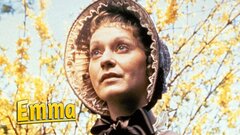Jane Austen

Writer
Birth Date: December 16, 1775
Death Date: July 18, 1817 — 41 years old
Birth Place: Steventon, Hampshire, England, UK
Only in the last few years of Jane Austen's short life did she see some income and recognition for her writing, although she worked at her craft for decades. Contrary to some contemporary ideas that Austen's work was unappreciated in its time, she was in fact a popular if anonymous novelist who wrote and published at a steady clip until her death in 1816, with her first novels Sense and Sensibility (1811) and Pride and Prejudice (1813) going into second printings, Emma (1815) a success as well and Mansfield Park (1816) selling out within six months of publication. Her final completed books, Persuasion (1817) and Northanger Abbey (1817), were published together posthumously.
Though moderately successful in life, Austen could not have dreamed of the industry her modest social satires would spawn. The never-married daughter of an English rector, Austen struggled to contribute to the support of her family with her writing, dying at the age of 41.
In the 21st century she has become a global media phenomenon, as seemingly endless film and television adaptations of her small body of work continue to be made and a worldwide network of devoted fans styling themselves "Janeites" stage teas, costume balls and conventions in honor of her and her books.
Austen was born at Steventon Rectory, Hampshire, England, in 1775 into a close-knit family with six boys and one other girl. Though her parents were descended from gentry, her father was a rector who took in schoolboy boarders for tutoring to make ends meet. Austen and her sister, Cassandra, were educated mostly at home by their father and brothers, although they did spend a year away at boarding school (1785-1786), which ended when the family could no longer afford to pay the fees.
Young Austen thrived creatively in the bosom of her family, however, and beginning in 1782 the siblings staged numerous amateur theatrical productions at home. A few years later, Austen began writing. The writer whose books featured mostly feisty heroines - the rather insipid Fanny of Mansfield Park was an exception - remaining determined, amid a shallow and materialistic society, to wed only for love, was herself unlucky in romance.
At the age of 20, she met and fell for a relative of neighbors, Tom Lefroy, only to be separated from him by their families due to the lack of money on both sides. In 1802, Austen accepted a proposal of marriage from a family friend named Harris Bigg-Wither but rejected him the following day despite the financial advantages he could have brought to her family; like her heroines, Austen had made the decision to avoid "marrying without Affection," as she advised a relative against doing in a letter written years later.
While her own writing career would eventually bring at least a small measure of the financial security she rejected in the person of Harris Bigg-Wither, its start was disappointing. Austen was working seriously throughout the 1790s on several early versions of books that would later make up the published Austen canon.
In 1803, Austen's brother Henry sold Susan, eventually published as Northanger Abbey (1817), to a publisher for £10. While the book was advertised as appearing soon, the publisher, Benjamin Crosby, never brought it out, and Henry was forced to purchase the rights back 13 years later. Tragedy struck the family in 1805 when her father, George Austen, died unexpectedly. In 1800, he had moved the family from Austen's lifelong home at the rectory to Bath, and following his death, Austen, Cassandra and their mother lived a peripatetic life for the next few years in rented accommodations and with relatives until in 1809 they settled into a cottage in Chawton owned by Austen's brother Frank.
That same year, she wrote to Benjamin Crosby requesting either the return of Susan or its publication. Crosby refused to return the book unless he was repaid the £10, and, still more or less destitute, Austen was unable to meet his demand and secure her copyright. At Chawton, however, Austen's career bloomed at last. In 1810, Henry Austen sold Sense and Sensibility (1811) to Thomas Egerton for publication in the following year.
Following its success, Egerton published Pride and Prejudice in 1813. Both were well-received critically and by the general public. In 1814, Mansfield Park was published and sold out within months. That same year, Austen was invited to the library of the Prince Regent, the future King George IV, a fan of her work.
Austen made the journey begrudgingly, as the admiration was not mutual; she disapproved of the Prince Regent's lavish lifestyle and his infidelities. Even the acerbic Austen was no match for the second royal "invitation" she received, however - to dedicate her next book to the man. When Emma appeared in 1815, the dutiful dedication to the Prince Regent accompanied it. Emma would be the last novel that Austen saw published. Although she continued working almost up until her death, revising Susan, writing Persuasion and beginning the unfinished novel with the working title Sanditon, she fell suddenly and mysteriously ill in spring of 1816 with a disease that historians have speculated may have been Addison's disease, leukemia or a form of tuberculosis, among other possibilities.
Despite Austen's attempts to downplay the seriousness of her condition, her health declined rapidly and she became bedridden. Her family sought treatment for her in May of 1817, but it was too late, and indeed there may well have been little a physician of the time could have done for her at any stage. Austen died on July 18, 1817, at the age of 41, and her brother Henry used his influence have her buried at Winchester Cathedral.
Persuasion and Northanger Abbey were published as a set at the end of 1817, accompanied by an introduction from Henry introducing his sister as the author at last. The books sold well enough but fell out of print after 1820, along with all Austen's remaining books. The 12-year period from 1820 to 1832, when her books were brought back into print by the publisher Richard Bentley, is the only stretch of time in which Austen has been out of print.
Austen continued to be read throughout the 19th century. Popular and critical opinion of her work remained mixed, with some critics ranking her alongside such greats as Shakespeare and others judging her fiction as simply not broad enough in its concerns or canvas. Present-day devotees of Austen can often be split into two camps, with one group embracing her as a "chick lit" romance novelist and the other asserting that the first group is misreading satirical and decidedly unromantic social commentary.
In fact, this debate has divided her admirers for at least 100 years. Multiple adaptations of Austen's novels have been made for television and film, ranging from the less-than-faithful first cinematic outing, "Pride and Prejudice" (1940), starring Laurence Olivier and Greer Garson, to the BBC productions of the 1970s that strictly followed the source material, to updates such as "Clueless" (1995), which transformed the heroine of Emma into a modern-day Beverly Hills high school student and "Bride and Prejudice" (2004), which reimagined Pride and Prejudice as a Bollywood musical.
Since the mid-1990s, Keira Knightly, Colin Firth, Gwyneth Paltrow and Kate Winslet have appeared in some of the more popular adaptations of Austen's work. Austen's novels and the films and movies inspired by them continue to fuel debate regarding the perceived dilution of their incisive social commentary resulting from both their immense popularity and significant changes made in some adaptations that radically alter the nature of Austen's heroines and her messages.
While critics may feel that the work of this important English novelist has been "dumbed down" as a result of her popularity, she has survived as one of the best-known and most beloved writers of the 19th century - and, regardless of the direction present-day interpretations of her work take, the books themselves remained unblemished for each future generation to approach with a fresh eye.
Credits

Sense and SensibilityStream

SanditonStream

SanditonStream

Drama on 4

EmmaStream

EmmaStream

Lost in AustenStream

Persuasion

Northanger Abbey

Pride and PrejudiceStream

Bride and PrejudiceStream

Kandukondain Kandukondain

Mansfield ParkStream

EmmaStream

Pride and PrejudiceStream

PersuasionStream

Sense and SensibilityStream

Sense and Sensibility

EmmaStream




